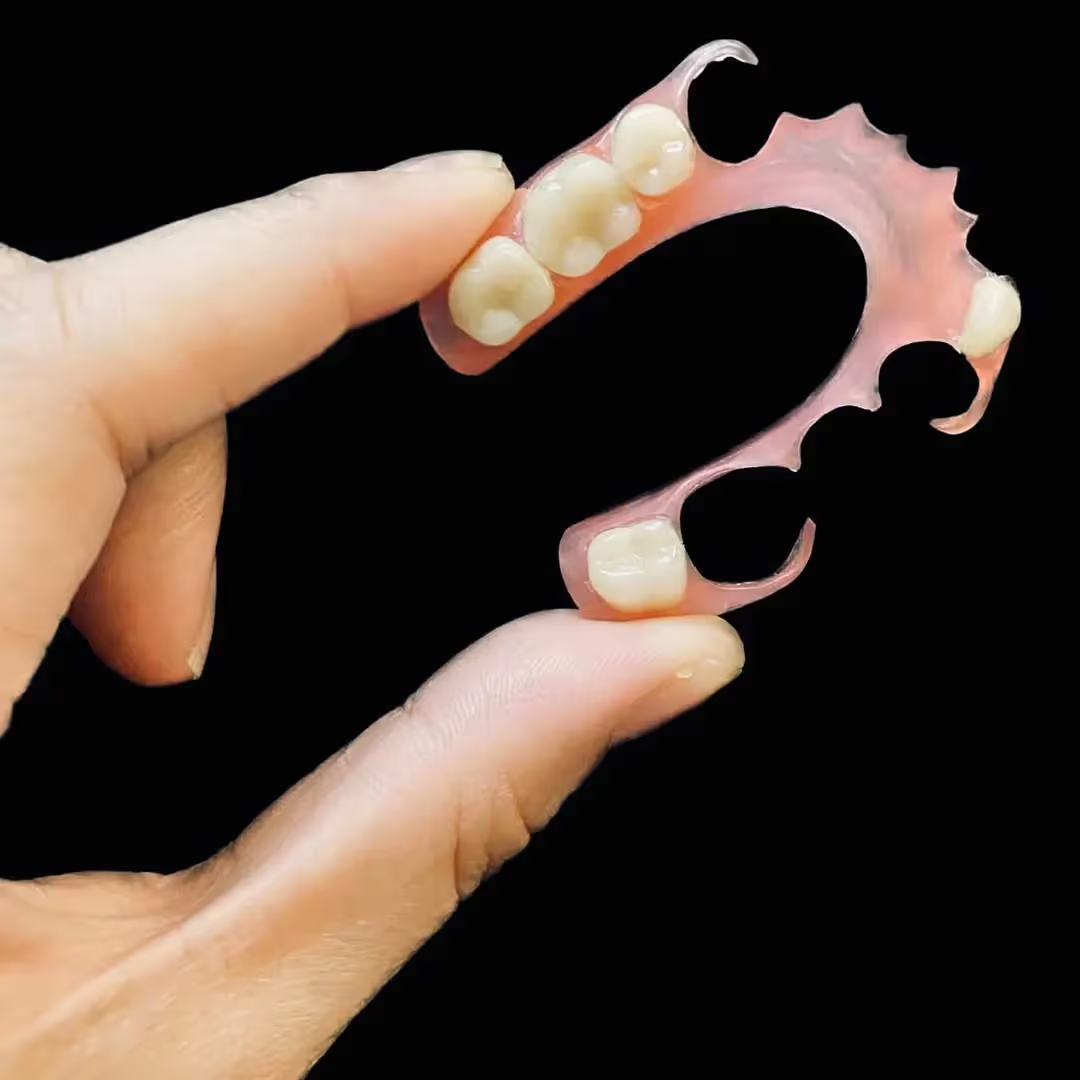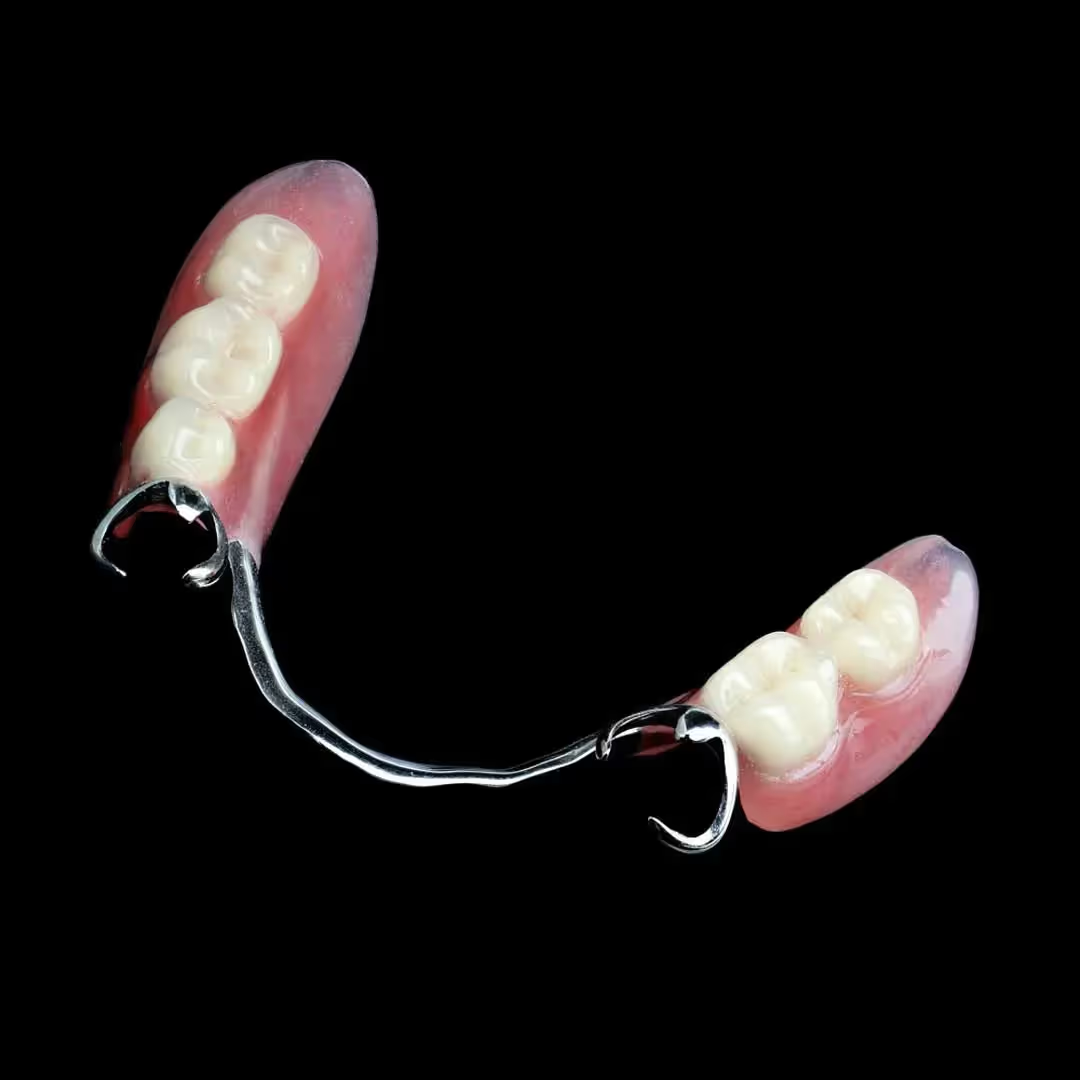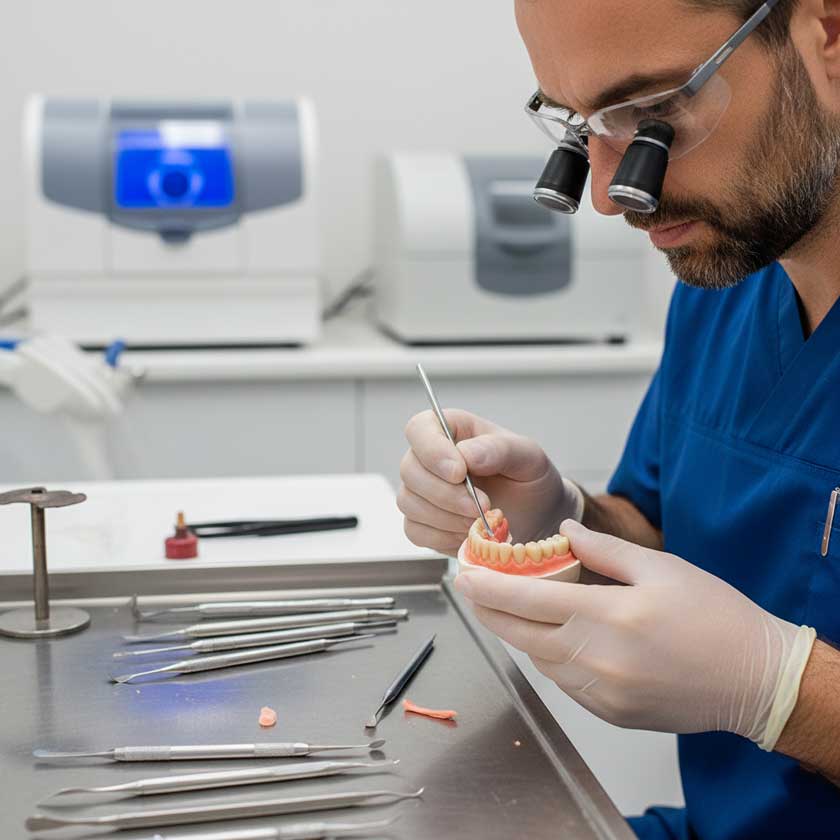When replacing missing teeth, various options are available, such as metal partial dentures and flexible partial dentures. Dentists make metal partial dentures with a metal base and acrylic teeth. In contrast, dentists or denturists typically make flexible partial dentures from a thermoplastic material like nylon or valplast.
Metal partials are strong and last long, while flexible partials are more comfortable and look more natural.
Key Takeaways:
- Metal partial dentures have a metal base, while flexible partial dentures are made from a thermoplastic material like nylon or valplast.
- Metal partials are known for their strength and longevity, while flexible partials offer greater comfort and a more natural appearance.
- Metal partials may have visible metal clasps, while flexible partials are more aesthetically pleasing.
- Proper care and maintenance are essential for ensuring the longevity of your partial dentures, regardless of the material.
- The price of metal partial dentures compared to flexible partial dentures can change based on materials and case difficulty.

Understanding flexible partial dentures.
People commonly use flexible partial dentures to replace missing teeth because they find them comfortable and they look good. Craftsmen use a thin, thermoplastic material, typically nylon or valplast, to create these dentures. This material is flexible and molds to fit your mouth perfectly, ensuring a comfortable and secure fit.
One of the key advantages of flexible partial dentures is their ability to blend seamlessly with your natural teeth and gums. Unlike traditional metal partial dentures, which often feature visible metal clasps, flexible partials are much more discreet. When you smile or speak, these dentures are less likely to be noticed by others, giving you the confidence to express yourself without any concerns about the appearance of your dental prosthetic.
In addition to their aesthetic appeal, flexible partial dentures also boast impressive durability. The thermoplastic material used in their construction is less prone to brittleness, meaning these dentures are less likely to break or shatter if accidentally dropped. This durability ensures dentures withstand everyday wear and tear, promising a longer lifespan than alternative options.
While flexible partial dentures offer numerous benefits, it's essential to remember that they may come with a slightly higher price tag than metal partial dentures. Additionally, flexible partials' lifespan may be shorter than their metal counterparts. However, when weighing the cost against the comfort, aesthetics, and improved durability, many patients find that the benefits of flexible partial dentures far outweigh any potential drawbacks.

Exploring metal partial dentures.
Metal partial dentures are popular for replacing missing teeth due to their strength, durability, and aesthetic appeal. These dentures have a metal base, typically made from cast metal materials like cobalt chromium or titanium.
One of the key advantages of metal partial dentures is their exceptional strength. The metal base provides a sturdy foundation that can withstand the daily pressures of chewing and biting, ensuring long-lasting functionality.
In addition to their strength, metal partial dentures are also highly durable. They are resistant to wear and tear, making them a reliable solution for patients seeking a restoration option that will stand the test of time.
The aesthetics of metal partial dentures are another notable factor. The metal base can be customized to blend seamlessly with your natural gums and teeth, offering a more aesthetic appearance. This allows you to confidently smile, speak, and eat without drawing attention to your dental restoration.
However, it's important to note that metal partial dentures may have visible metal clasps. While necessary for stability, these clasps can be a drawback for some individuals who prefer a more discreet option.
Overall, metal partial dentures are a reliable and durable solution for individuals seeking a strong and aesthetically pleasing tooth replacement option. Consult your dentist to determine if metal partial dentures are the right choice.
Comparing the pros and cons of metal vs flexible dentures.
When choosing between metal partial dentures and flexible partial dentures, it's essential to consider the pros and cons of each option. Both metal partials and flexible partials have their unique advantages and disadvantages that should be taken into account. Let's delve deeper into the key factors to consider:
Durability:
- Metal partials are known for their strength and durability, making them a long-lasting solution for replacing missing teeth.
- Flexible partials, on the other hand, are less likely to break or shatter if accidentally dropped.
Comfort:
- Flexible partials are made from a thermoplastic material that can bend and flex to fit the contours of your mouth, providing a more comfortable and secure fit.
- Metal partials may have visible metal clasps, which can cause discomfort for some patients.
Aesthetics:
- Flexible partials are designed to blend in with your natural gums and teeth, offering a more natural appearance. The lack of visible metal clasps makes them aesthetically pleasing.
- Metal partials may have visible metal clasps, which can be a drawback for individuals prioritizing a seamless and natural-looking smile.
Cost:
- Flexible partials are typically more expensive than metal partials.
- Additionally, additional teeth need to be added to a flexible partial. In that case, it may require full replacement, resulting in additional costs.
Adjustments:
- Flexible partials may require more adjustments over time due to wear and tear, especially if subjected to heavy biting forces.
- Metal partials may be easier to adjust and modify as needed.
Ultimately, choosing metal partial and flexible partial dentures depends on your priorities and individual needs. Metal partials may be better if durability and longevity are your primary concerns. However, if comfort and aesthetics are your main priorities, flexible partials may be more suitable. Discussing these factors with your dental professional can help you make an informed decision and find the best partial denture solution.
Taking care of your partial dentures.
Proper care and maintenance are essential for ensuring the longevity of your partial dentures, regardless of whether they are metal or flexible. Here are some tips to help you take care of your partial dentures:
- Clean your partials daily: Use a denture-specific cleanser and a denture brush to remove bacteria and plaque from your partial dentures. This will help keep them clean and hygienic.
- Soak your partials overnight: Soaking your partial dentures in a denture solution overnight can help eliminate bacterial buildup and keep them fresh. Follow the instructions provided with your denture solution for the best results.
- Practice good oral hygiene: Regular brushing and flossing of your remaining natural teeth is important to maintain good oral hygiene. This will help prevent the buildup of plaque and bacteria in your mouth.
- Avoid hard or sticky foods: To prevent damage to your partial dentures, avoid eating hard or sticky foods that could cause them to break or become dislodged.
- Use denture adhesive when needed: If you experience discomfort or looseness with your partial dentures, it can help improve their fit and stability. Follow the instructions provided with the adhesive for the best results.
Remember, properly caring for partial dentures is crucial for maintaining functionality and appearance. By following these care and maintenance tips, you can ensure that your partial dentures serve you well for years to come.
Considering the costs.
Cost is essential when choosing between metal partial dentures and flexible partial dentures. The overall cost can vary depending on several factors, including the materials used and the complexity of your specific dental case.
Comparing metal partial cost and flexible partial cost.
In general, flexible partial dentures are more expensive than metal partial dentures. This is because the thermoplastic materials used in flexible partials, such as nylon or valplast, are typically pricier than the metal materials used in metal partials, such as cobalt chromium or titanium.
However, it's important to remember that cost should not be the sole deciding factor when choosing the suitable partial denture for you. Consider other aspects, such as durability, comfort, and aesthetics, to ensure the best overall value for your investment.
Repairs, adjustments, and relining costs.
Over time, your partial dentures may require repairs, adjustments, or relining to ensure a proper fit and function. It's essential to remember that these additional services may incur extra costs. Discuss the potential fees for repairs, adjustments, and relining with your dentist, as they can vary depending on your dental provider's specific circumstances and expertise.
Exploring financial options.
If you have concerns about the cost of your partial dentures or any necessary repairs or adjustments, don't hesitate to discuss potential financial options with your dentist. They can help you explore available insurance coverage, payment plans, or financing options to make the cost more manageable.
Financial considerations and your dental health.
While cost is an important aspect to consider, it's crucial to prioritize your dental health and overall well-being. Investing in quality partial dentures that fit well and function properly, whether metal or flexible, can enhance your oral health, confidence, and quality of life.
Things to consider for metal partial and flexible partial dentures.
Patients can choose between metal partial and flexible dentures when replacing missing teeth. The decision should be based on durability, comfort, aesthetics, and costs. Metal partials are known for their strength and longevity, making them a durable option for patients. On the other hand, flexible partials provide greater comfort and a more natural appearance, enhancing the overall experience for patients.
Choosing metal partial and flexible partial dentures depends on each patient's needs, preferences, and budget. It's essential to consult with a dentist who can provide guidance and discuss the various denture options available. This will help patients make an informed decision and choose the best partial denture solution for their situation.
Regardless of the type of partial denture chosen, proper care and maintenance are essential for ensuring their longevity and effectiveness. Regular cleaning, soaking, and oral hygiene practices are crucial to keep the dentures fresh and bacteria-free. Additionally, patients should follow any recommended care instructions and schedule regular dental visits to address any potential repairs, adjustments, or relining needs that may arise over time.
By considering the factors of durability, comfort, aesthetics, and costs, patients can choose the partial denture option that best suits their needs and preferences. With proper care, their denture can provide a comfortable and confident smile for years.
FAQ
What are metal partial dentures?
Metal partial dentures have a metal base, typically made of cast metal such as cobalt chromium or titanium, with acrylic teeth.
What are flexible partial dentures made of?
Flexible partial dentures are typically made from a thermoplastic material like nylon or valplast, which is thin and flexible.
How do metal partial dentures differ from flexible partial dentures?
Metal partial dentures have a metal base, offering durability and strength. In contrast, flexible partial dentures have a flexible thermoplastic base, providing greater comfort and a more natural appearance.
Are metal partial dentures more durable than flexible partial dentures?
Yes, metal partial dentures are known for their strength and durability, making them a long-lasting option.
Are flexible partial dentures more comfortable to wear?
Yes, flexible partial dentures are made from a thin, flexible material that can bend to fit the shape of your mouth, offering a more comfortable and secure fit.
Which type of partial denture is more aesthetically pleasing?
Flexible partial dentures are generally considered to be more aesthetically pleasing because they don't require visible metal clasps and are less likely to show when smiling or speaking.
Do metal partial dentures require visible metal clasps?
Yes, metal partial dentures may have visible metal clasps, which can be a drawback for some patients concerned about aesthetics.
Are flexible partial dentures more expensive than metal partial dentures?
Yes, flexible partial dentures tend to be more expensive than metal partial dentures.
What is the recommended care and maintenance for partial dentures?
Proper care includes daily cleaning using a denture-specific cleanser and brush, soaking in a denture solution overnight, regularly brushing remaining teeth, and avoiding hard or sticky foods. Denture adhesive can be used for improved fit and stability.
What are the costs associated with partial dentures?
The cost of partial dentures can vary depending on the materials used and the complexity of the case. Repairs, adjustments, and relining can incur additional costs over time.
How do I decide between metal partial dentures and flexible partial dentures?
The choice depends on durability, comfort, aesthetics, and costs. Consulting with your dentist and discussing your specific needs and preferences will help you make an informed decision.








